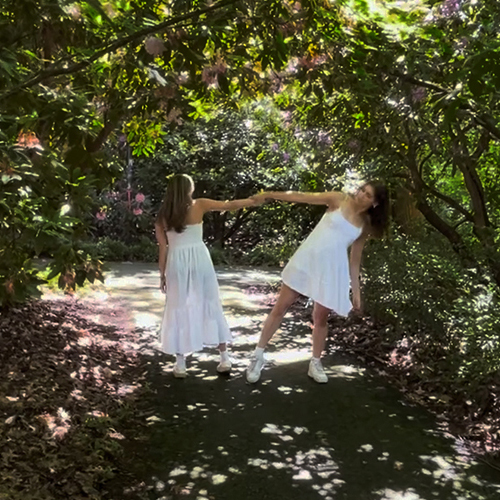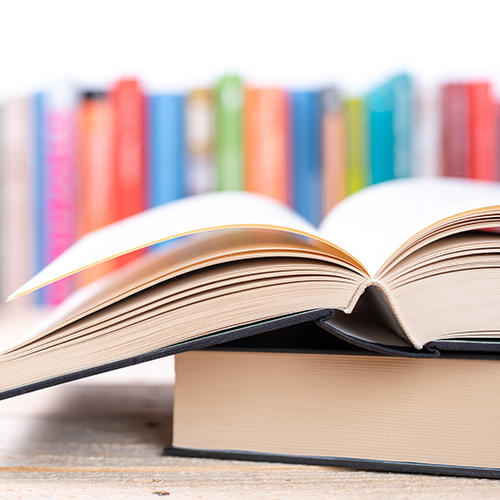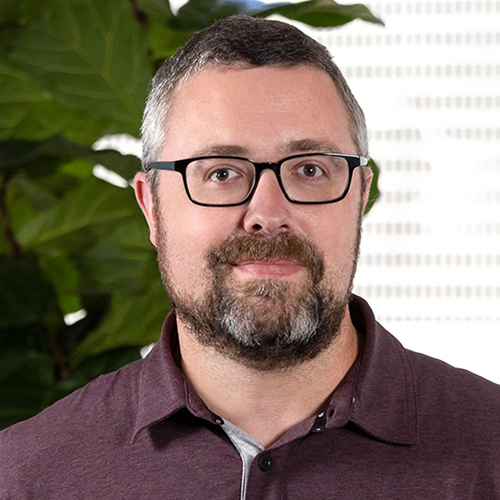When Brian J. Carter applied to the UW’s Museology Program, he wrote an essay about his dream of founding an African American history museum in Seattle.
Sometime dreams do come true.
Carter now works as education director at the new Northwest African American Museum (NAAM), which opened in Seattle in March.
As an A&S alumnus, Carter is in good company at the museum. Five of NAAM’s nine staff hail from the UW College of Arts and Sciences, with four bachelor’s,
two master’s, and one Ph.D. degree between them (plus two more master’s degrees from other UW colleges).

The museum staff also boasts a combined 35+ years of employment at the UW, ranging from creating the University’s affirmative action program to heading its Office of International Programs and Exchanges. But developing the Northwest African American Museum may be this group’s greatest challenge.
Plans for the museum had been in the works—but often mired in politics—for more than 25 years before any of the current staff became involved. The project built momentum when the Urban League of Metropolitan Seattle (ULMS) agreed to purchase Colman School, where the museum is located, in 2001. Four years later, Carver Gayton was named NAAM executive director with Barbara Earl Thomas as deputy director and curator of programs.
No one was more surprised by this turn of events than Gayton and Thomas.
The pair were on the search committee for the executive director position and had just participated in interviews of three finalists. Gayton had to leave while the committee was still discussing the finalists.
“Constance Rice, chair of the committee, said, “‘Everyone was great, but this position is so political that we really need someone who knows all the players,’ ” recalls Thomas. “As soon as Carver walked out the door, Constance said, ‘I don’t know why we’re doing all this, because the person we really need is Carver Gayton.’”
Rice’s conclusion was understandable. Gayton’s family has had a long history in the region, ever since his paternal grandfather settled in Seattle in 1888. And Gayton has had an illustrious career, always with an emphasis on education and diversity.
After graduating from the UW in 1960 with a B.A. in history, Gayton briefly taught at his alma mater, Seattle’s Garfield High School. He then joined the FBI, where he was one of 12 African American agents among the agency’s 6,000. In 1968 he returned to the UW to serve as assistant coach for the football and track teams—he had played on the 1960 Husky football team, the first to go to the Rose Bowl—and to work with University Relations to increase the presence of African Americans on campus. He remained at the UW for 11 years, setting up the University’s first affirmative action program while earning a master’s degree in public administration and a Ph.D. in political science. In his spare time, he served on the Seattle School Board.

In the years that followed, Gayton worked at Boeing, with an emphasis on education programs, and as Commissioner of Employment Security for the State of Washington under the leadership of Governor Gary Locke. More recently he taught part-time at the UW Evans School of Public Affairs.
“At that time I thought I’d take some time off,” says Gayton. “But the fact is, I just got so antsy.”
That was good news for NAAM. When Gayton got the call asking him to consider the executive director position, the timing was right. But he was still hesitant. He knew that only $4 million had been raised for the museum, which was a $23 million project. And he knew that it had taken nearly 30 years to get this far.
Gayton eventually agreed to take on the challenge, with one condition: his old friend Barbara Thomas would have to join him.
Thomas also required convincing. “When Carver said he wouldn’t do it without me, I said, ‘You’re crazy. This is totally not on my radar. It sounds like a headache,’ ” recalls Thomas. “But then I’ve always been so impressed with Carver, and seeing the opportunity to work with him was intriguing.”
Thomas’s experience complemented Gayton’s. A renowned painter and public artist with bachelor’s and master’s degrees from the UW School of Art, she has extensive experience in arts administration, including serving as project manager for the Seattle Arts Commission and director of the Bumbershoot Festival Commission. Still, none of this fully prepared her for what was to come.

“Carver and I spent four months going through everything to figure out if this museum was really feasible,” she says. “Since then, I feel like I’ve been in a jet with the G-forces pressing against me.”
Gayton and Thomas realized that community involvement would be essential as NAAM planned its permanent exhibition. “The exhibit had to be local and personal,” says Thomas. “When people walk in, we want them to find something about themselves inside.”
NAAM volunteers met with about 40 community groups in Washington, Oregon, Idaho, and British Columbia, asking people what they’d like to see in the museum and gathering personal histories for the exhibit. Many artifacts on display were discovered in these conversations.
“We’d ask, ‘If you could pick two things from your family for the museum, what would they be?’” recalls Thomas. “At first people would say they didn’t have anything. But when we explained that we were looking for things that tell a story, like a harmonica or old letters, they would often come up with wonderful stuff.”
About the time of these community meetings, Brian Carter contacted Thomas. He had recently enrolled in the UW’s Museology Program (offered through the College of Arts and Sciences and the Graduate School) and a professor had told him about NAAM. “I called Barbara and told her I’d do anything they needed for free. Anything. I just wanted to be part of the museum. She took me under her wing.”

Carter started as a volunteer, then moved into a paid position. Barbara Lavert, office manager, also began as a volunteer after discussing NAAM with Thomas during a random encounter at the post office.
Lavert knew Thomas from their years at the UW. (Lavert earned a B.A. in sociology and an M.A. in urban planning.) She had faith in Thomas and Gayton, but as she learned more about NAAM, she found the scope of the project daunting. “Seeing what they wanted to do from A to Z, I thought it was impossible,” admits Lavert. “And that was appealing to me.”
With a growing staff and a dedicated board, the museum roared to life. Carter, fresh off of an internship at the Henry Art Gallery, began developing cataloging systems and collection management and loan policies for NAAM. He also researched other African museums across the country.
“I wanted to build bridges and find out what worked for them and what didn’t.”
In 2006, NAAM hired Formations, Inc., an exhibit design firm, to create a permanent exhibit in its Journey Gallery. The challenge was to create something inclusive, educational, and engaging for all ages, within a limited 1,800 square-foot space. The resulting exhibit has at its core a timeline, beginning in the present and traveling back to 1788. That’s when the first person of African descent arrived in the Northwest on a ship exploring the West Coast.
The years since that first arrival are celebrated through stories of farmers, miners, business owners, politicians, activists, and others who have helped shape the region. “You get the sense that black people did all kinds of things,” says Thomas. “They got drawn to the Northwest because of land, because they could start from scratch and make themselves whoever they wanted to be.”
Artifacts include a program from a Martin Luther King visit to Seattle in 1963 and a wide-brimmed felt hat worn by Jimi Hendrix. But there are also stories, photos, and objects from less public figures who helped shape the Northwest.

“In this small space we knew we couldn’t do a definitive history,” says Thomas, “but we could do a broad brushstroke showing people who were representative of what was going on at a given time.”
Gayton says he finds something new in the exhibit every time he walks through it. “It refreshes memories of what my life and my family’s life has been here,” he says.
Of course not all visitors have Gayton’s long ties to the Northwest. Some are tourists, or recent transplants, or too young to fully appreciate their family’s history. The museum is working hard to ensure that all visitors—even the youngest—are drawn to the exhibits. There are suitcases to open with treasures inside, doors that swing out to reveal hidden displays, and short videos.
NAAM’s first temporary exhibit has a similar sensibility. Curated by Barbara Thomas, it highlights the work of Northwest artists Jacob Lawrence—one of Thomas’s mentors in the UW School of Art—and James Washington, Jr.. Along with artworks, the exhibit displays items from each artist’s studio, including tools, paint supplies, blocks of stone, and even Lawrence’s armchair.

Beyond its exhibits, the museum offers a genealogy research center, a youth docent program, a lecture series, a cafe, a store, a large room for special events, and a classroom for hands-on art projects. More than 100 volunteers help with tours, collection management, fundraising, and other roles.
None of this would have been possible without financial support. Since 2005, the NAAM team, in partnership with ULMS, has raised $15 million toward the project’s capital campaign. UW alumna Kay Hubbard (B.A., Anthropology), who headed the UW’s International Programs and Exchanges Office for many years, recently joined the museum’s staff as development director to continue the museum’s fundraising efforts.
Hubbard, like many of her NAAM colleagues, was brought on board by Thomas, an old friend. She didn’t require much convincing. “For anyone interested in learning about history and culture and identity and art, this place is absolutely magical,” Hubbard says.
Some consider the mere existence of NAAM, after so many years of delay and disappointment, a little bit of magic. But it really boils down to finding the right people for the job.
“That we’re actually here, and on time, is amazing,” says Lavert. “I don’t think anyone but Carver and Barbara could have done this. Others have tried, but those two made it happen.”
Not that they are ready to rest on their laurels just yet.
“Getting this far has been no easy thing,” says Thomas. “And we’re still building the airplane while we’re flying. That makes us start each day with a certain air of urgency.”
Editor's update: Since being interviewed for this article, Carver Gayton announced his retirement from NAAM, effective June 25. “I’m pleased with what we’ve been able to do,” he told The Seattle Times, “and now it’s time to move on to another venture.” Barbara Earl Thomas is serving as acting director.
More Stories

Dancing Across Campus
For the dance course "Activating Space," students danced in public spaces across the University of Washington's Seattle campus this spring.

Read or Listen to Faculty Favorites
Looking for book or podcast recommendations? We asked faculty who've been featured in Perspectives newsletter during the past academic year to suggest a personal favorite.

Working Toward Responsible AI
Artificial intelligence (AI) is an essential tool at Indeed, a global job-matching and hiring platform. Trey Causey (2009) works to ensure that the company's AI promotes equity and fairness.